Phenology
- raspberrythief
- Mar 17
- 4 min read
It's Phenology Week in the USA, why not join in, and add this to your nature journaling toolkit?
Phenology
“It was one of those March days when the sun shines hot and the wind blows cold: when it is summer in the light, and winter in the shade.”
― Charles Dickens, Great Expectations
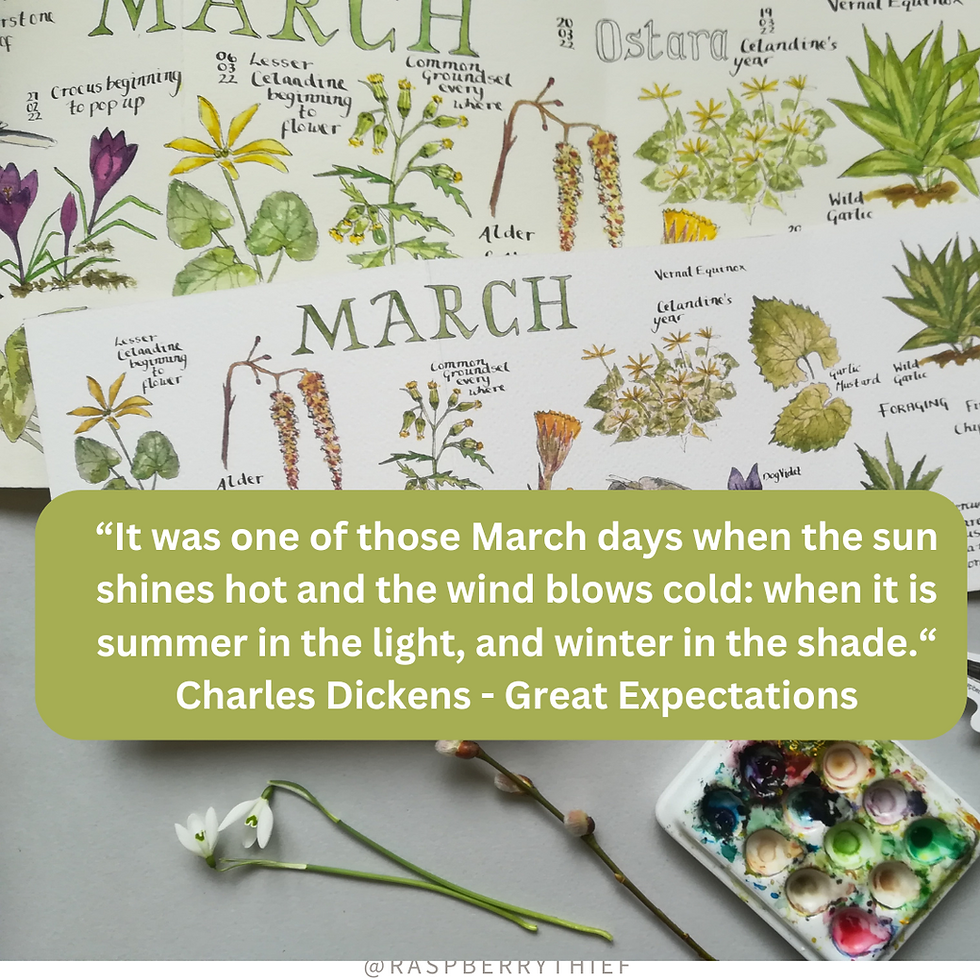
This time last year as part of my Patreon Community Tier membership, I introduced my patrons to the term ‘phenology’. If you’d like to see a full video and full set of information and resources you can find that video here.
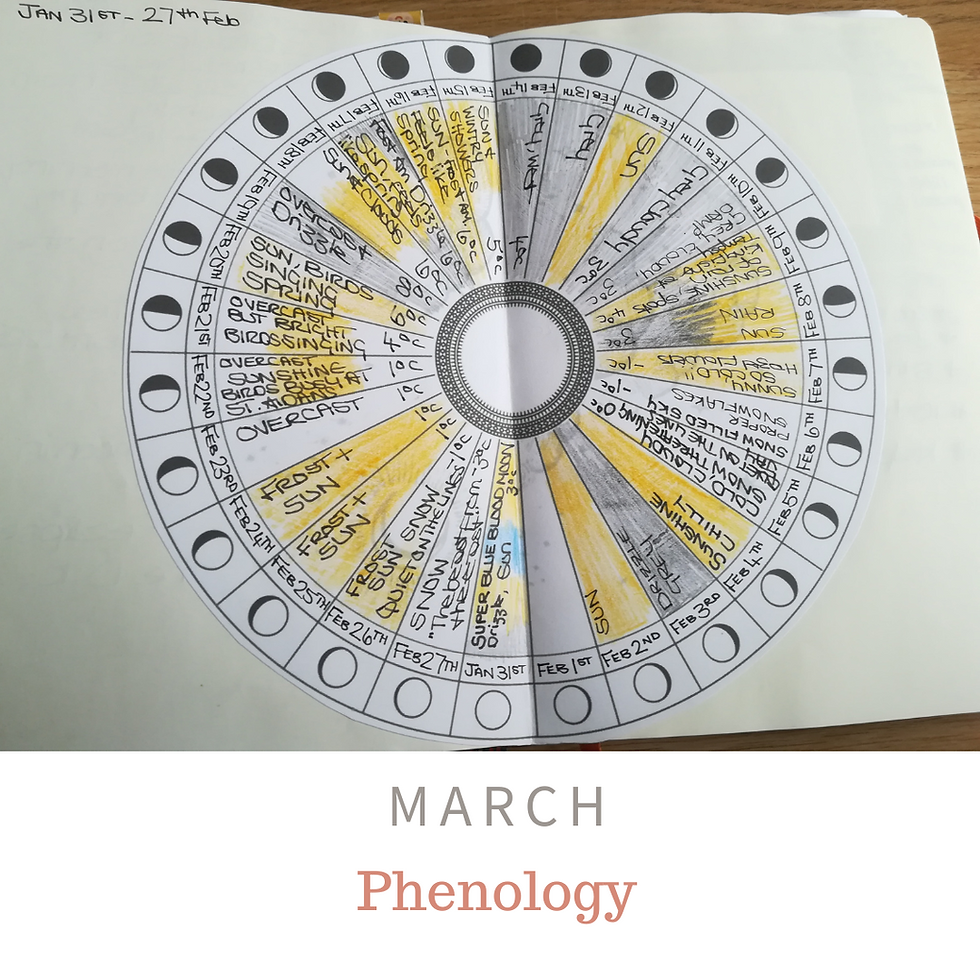
Phenology is the driving force that has inspired the entries over the last nine years in my own nature journals.
I shared the National Phenolgy Networks #phenologyweek in the USA with my patrons last year, and it just happens to be start of #phenolgyweek again this year. So I thought I would write a little here about this wonderful subject that is so important.

I first came across the term ‘phenology’ back in 2018 via the Woodland Trust charity in the UK, and their Nature’s Calendar project. This is a calendar that I still follow and refer to every year, and you can add your own entries to this valuable Citizen Science Project in the UK.
The definition of phenology (from Wikipedia)
‘ is the study of periodic events in biological life cycles and how these are influenced by seasonal and interannual variations in climate, as well as habitat factors (such as elevation).
principally concerned with the dates of first occurrence of biological events in their annual cycle.’
The Woodland Trust gives a more readable definition below:

Back when I started in 2016 I’d never heard the term ‘phenology’ before, or ‘nature journal’, but I soon realised that the entries I had been keeping in the previous years fit into both of these categories. Noticing, observing and documenting the ‘firsts’ were the things that made me happy, inspired and compelled me to carry on.
As I am prone to do, I went on a little rabbit hole of research and came across ‘phenology wheels’, in 2018 there were no Pinterest boards full of stunning wheels or Instagram Posts. But I did come across the work of Anne Forbes on Earthzine and on an old post on her wordpress blog Partners in Place from 2012. Annes’ work on time and place, lit me up, and inspired me. As is usual with the internet her work has been buried and forgotten, and should be given much more credit.
I immediately downloaded a copy of a wheel that spoke to me, and began filling in the details.
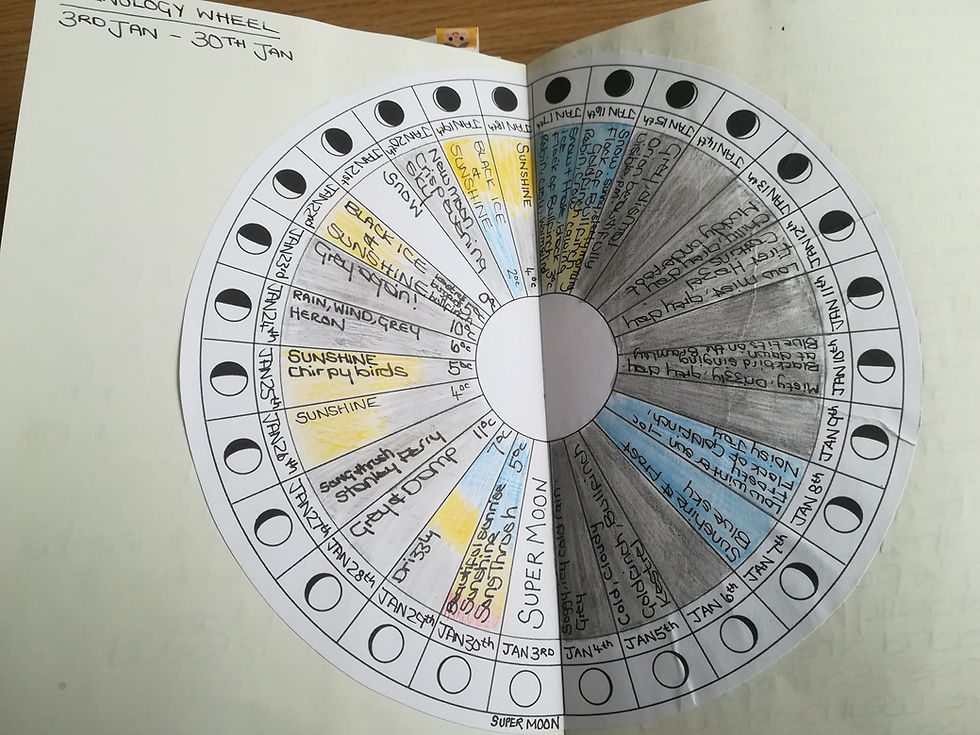


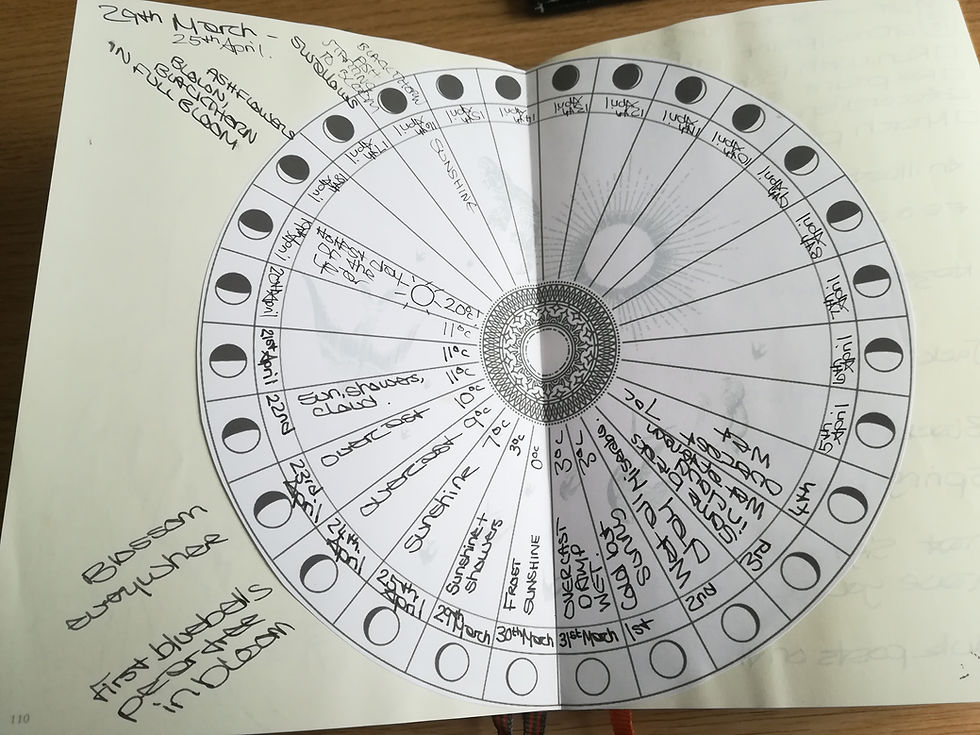
As you can see from the images above I stuck it out for quite a while. I began a daily practice of documenting the temperature and weather, using colour as a way to document the sunny days and the grey days. It didn’t take me long to realise and you can see on the last wheel that my focus moved. I began capturing nature as a way to get through the grey days, and my attention soon moved to documenting the plants and trees as they appeared, blossomed and fruited. This felt like where my attention should be, and the wheel format didn’t fit for me. For the same reason that I don’t like standard ‘diaries’, all the blank spaces, pages where you didn’t have time, missed a day.
The same year I had also begun using a ‘concertina’ or ‘accordian’ journal to document what I saw for the first time, and the rest as they say is history or should I say 'herstory'. A continuous, linear documentation of the phenological signs where I live. No restrictions other than the size of the paper, no empty pages or spaces, I could add as I went along. I had found my medium and inspiration.
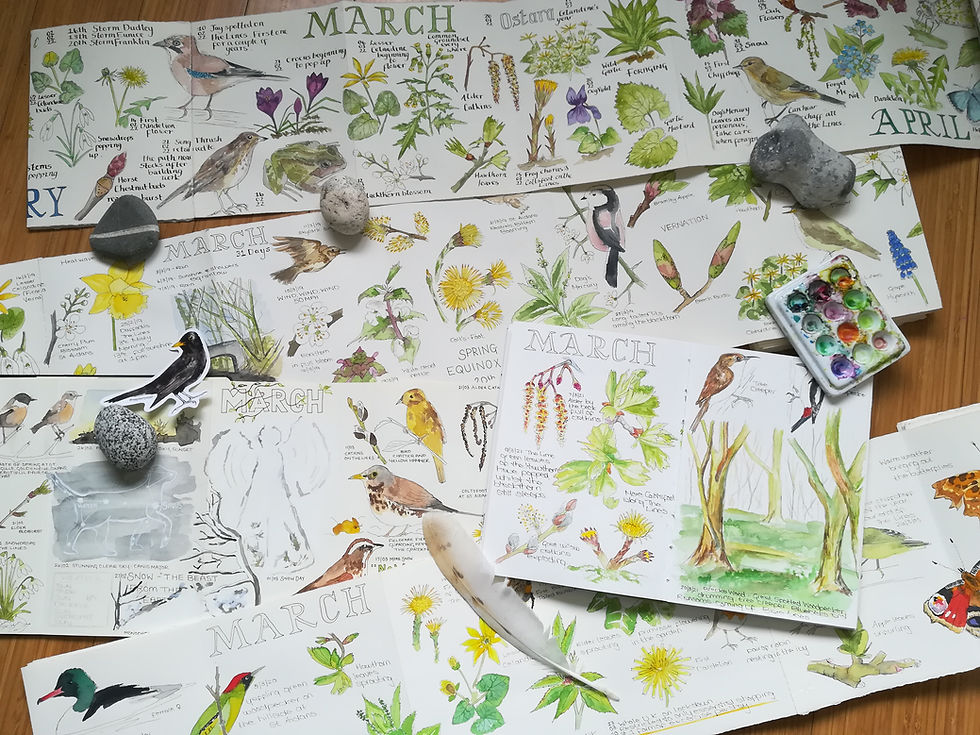
9 years later and this is the format that I have stuck with. ‘Nature journaling’, a term that I am becoming more reluctant to use, is personal, it is your personal connection to the world around you.
No one can tell you how you should keep ‘your record’ of ‘your connection’, if you want to write, paint, fill in data, or chop and change, it is entirely up to you. All formats are valid, and we should be encouraging everyone, in whatever way appeals to them to ‘notice, connect and record’ what they see. You will learn so much, and its up to you which avenues of learning you choose to go down.

My ‘Nurture journals’ may look like a series of paintings, but contained within the pages are 9 years of ‘Citizen Science’ observations of the place I live. Over the years I have learnt more and more, some years I have leaned more towards flowers, other years more towards birds or trees. I revisit some of the same plants, and trees every year. I care about these beings that I share my space with, and I want to return my thanks in this record. This calendar of the years, or the cycles, seasons and small changes that occur.
If you’d like to keep a record of the ‘phenolgical’ signs where you live, here are the kinds of things to look out for.
Trees and Shrubs - Budburst, first leaf, first flower, fruit ripe, full tint, leaf fall, bare tree
Flowers - First Flower
Migratory Birds - First and last recorded
Resident Birds - First hear singing, first nest building, first feeding young, young first seen
Insects - First recorded
You can find some great information via the Woodland Trust if you’re in the UK, and access their downloadable calendar. You can also help with the Citizen Science project by adding your own observations. This research has become invaluable in our understanding of how climate change is affecting nature in the UK.
In the USA you can find more info with the National Phenology Network. This week they have series of events and ideas each day.
I also recently attended a webinar by Inaturalist, that showed you how to add ‘phenological terms’ to your observations. I didn’t realise you could do this, and I will be making sure that I do this with all my entries in the future. The data that is collected will hopefully help our planet in the coming years.
Have you heard of phenology? Is it something that you might include in your nature journal? Maybe you could find an interesting way of documenting these signs that's personal and works for you.
Ang x

Komentáre